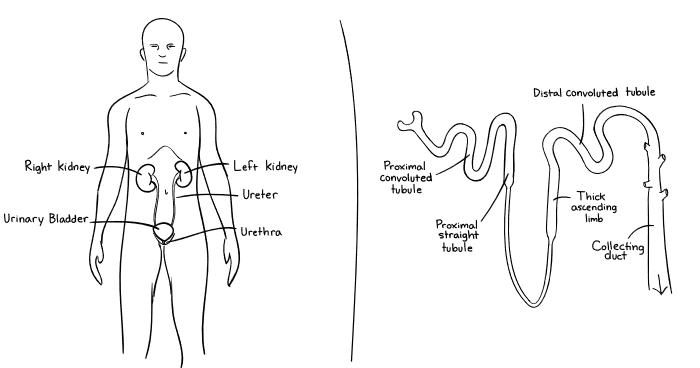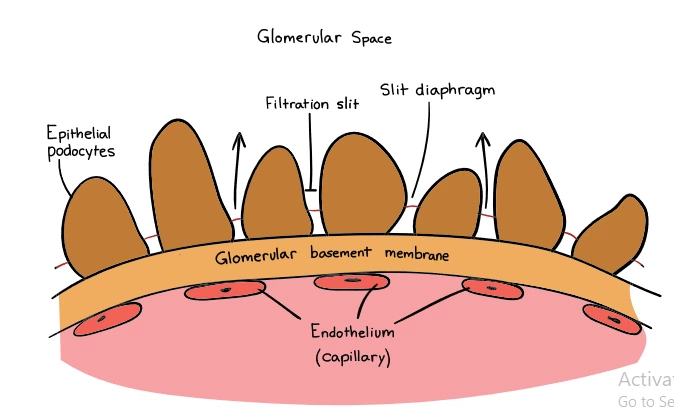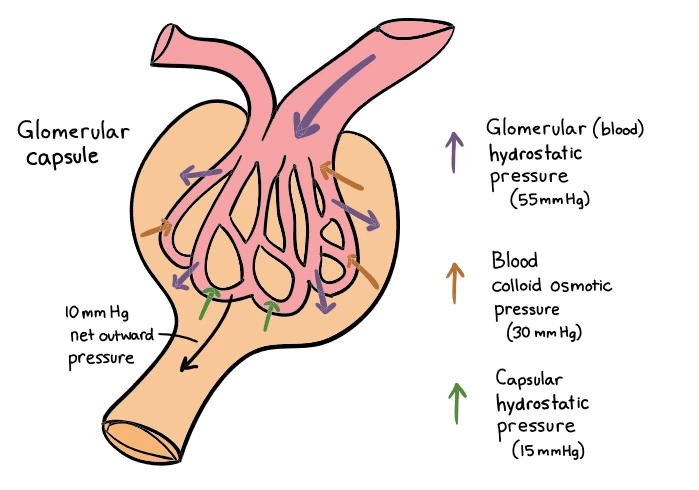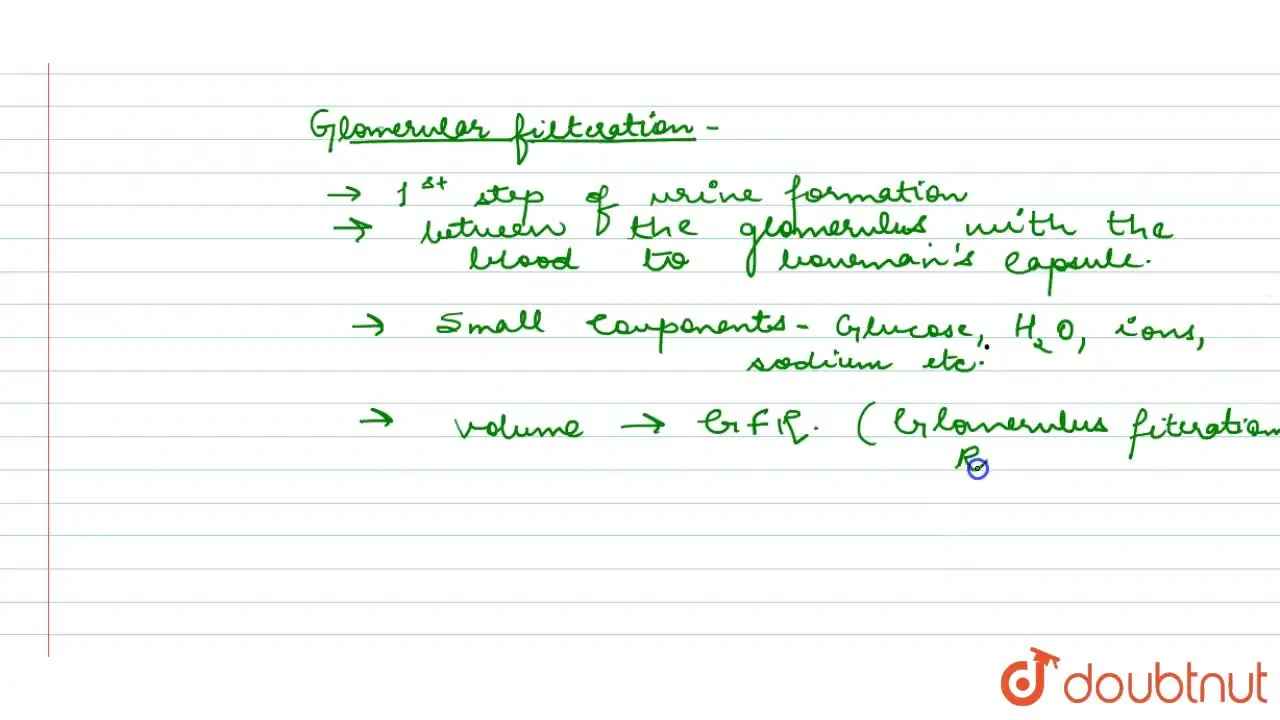Glomerular Filtration
Glomerular Filtration
What is glomerular filtration?
Do you know that your urinary system and kidneys play a key role? Unless things go wrong, you never think about what it takes to urinate. Each minute, your kidneys and urinary system receive over a litre of blood where around 1.5 litres of urine is eliminated per day. Here, it eliminates all the waste products as well as excess wastewater that would have made you suffer from serious problem otherwise. The first step to make urine is Glomerular filtration. It refers to the process where the excess fluid and waste products are filtered out of the blood into the urine, collecting tubules of the kidney to eliminate from your body.
Why is urine made?
The things that you eat and drink is processes or so-called metabolized by your body. To keep your organs and tissues healthy, it produces energy. During this process, there are certain substances which cannot be stored or used for later. So, it needs to get eliminated in order to prevent toxic build-up. There are also certain substances like fats and carbohydrates which remain in store or are far more than it is needed on a day-to-day basis. There might be a change of colour in your urine when you take some foods and medications. For example, if you consume blackberries, beet or rhubarb, the colour might change into pink or red. This is because of the fact that the kidneys eliminate the colourful soluble pigments.
The main substances which are excreted in the urine are:
- Metabolic waste products like urea and creatinine
- Electrolytes like inorganic compounds that include chloride, potassium, sodium and bicarbonate where the fluid is controlled by your body in order to control the fluid content.
- Water.
Your body’s natural blood filter is your kidney that controls the number of substances and water dissolved in your body fluids. This is done by reabsorbing what you need and then further produces urine to get rid of the rest. It is important to note that when it comes to the production of urine, it is obligatory. This means that even when you are severely hydrated, your body still makes urine. This is done to keep your internal conditions stable in the best way. It proves to be a complicated process when it comes to making urine where a million specialized structures are present in your kidney, which is known as nephrons.

Related Videos:
- Glomerular Filtration Rate
- Glomerular filtration rate would be decreased by
- The glomerular capillary blood pressure causes filtration of blood through three layers in a sequence of
How glomerular filtration works?
Separating the liquid of your plasma (blood) is the first step in making urine. It consists of all the dissolved solutes where the nephron, on the other hand, has a microscopic filter which is called a glomerulus. It constantly filters your blood. The filtered blood enters a glomerulus that happens to be a tuft of blood capillaries. It happens to be the smallest of blood vessels. It is at the end of each nephron that the glomerulus is present, which is called a glomerular capsule. There are small poles in walls of the glomerular capillaries. When it comes to the capillary beds, they are sandwiched between the venules and arterioles and the hydrostatic pressure drops. The reason is that the blood travels through the capillary bed.
On the other hand, the glomerulus is found to be sandwiched between two arterioles. Afferent arterioles do the delivery of the blood while efferent arterioles carry it away. There are changes in sizes by the two arterioles to increase or decrease blood pressure. Coming to the size of the efferent arterioles, it is smaller in diameter as compared to afferent arterioles. It is through the glomerulus that the pressurized blood enters and that too through a relatively wide tube. Regardless of the fluctuations in blood flow, your heart supplies over a litre of blood per minute to your kidneys. It is the physical characteristics of the glomerular capillary that determines what needs to be filtered and the quantity as well.
Layers of capillary walls
There are three layers in the capillary walls which have been discussed below:
- Endothelium: Having large pores of diameter 70 – 100, it solutes plasma proteins. Here blood cannot pass through it.
- Basement membrane: It is also made up of three layers which are found to be fused to the endothelial layer. The primary task is to help in the prevention of plasma proteins which cannot filter out from the bloodstream at all.
- Epithelium: This is the third layer of capillary walls where it consists of specialized cells known as podocytes. It remains attached to the basement membrane.

Glomerular filtration rate
Glomerular filtration rate happens to be the rate at which kidneys filter blood. The blood pressure is the main driving force for the process of filtration as it enters the glomerulus. The outward pressure minus the inward pressure is the net filtration pressure.

Important Chapters:



Similar Questions
Read the following statements and choose the correct option
(i) Glomerular filtration rate in a healthy individual is about 180 ml/day
(ii) All constituents of plasma pass into lumen of Bowman's capsule
(iii) 70−80% of electrolystes and water are absorbed in PCT
(iv) Angiotensin II increases the glomerular blood pressure and GFR
(v) Counter current system contribute in concentrating the filtrateView SolutionWhich of the following statements about the glomerular filtration is CORRECT ?
I. The hydrostatic pressure of blood in glomerular capillaries allows filtration.
II. The diameter of the efferent arteriole is lesser than the diameter of the afferent arteriole.
III. The fluid collected in the urinary space contains all constitution of blood except RBCs.
IV. The net filtration pressure at the glomerulus is around 40 mm Hg.View SolutionAssertion: Pregnant women may show some presence of glucose in their postprandial urine although they have no diabetes.
Reason: In pregnant women the glomerular filtration rate is slightly increased. As a result the tubular load of glucose exceeds the tubular maximum for glucose reabsorption.View SolutionAssertion: Pregnant women may show some presence of glucose in their postprandial urine although they have no diabetes.
Reason: In pregnant women the glomerular filtration rate is slightly increased. As a result the tubular load of glucose exceeds the tubular maximum for glucose reabsorption.View SolutionComplete the following paragraph by selecting the option that correctly fils the blanks (i)- (iv) The kidney have built-in mechanisms for the regulation of glomerular filtration rate. One such efficient mechanism is carried out by (i)._____ It is a special sensitive region formed by cellular modifications in the (ii)._________ and the (iii)._________ at the location of their contact. A fall in GFR can activate the JG cells to release (iv).________ which can stimulate the glomerular blood flow the thereby brings GFR back to normal
View SolutionGlomerular filtrate is
View SolutionWhich of the following statement is / are true ?
I. Glomerular filtrate is isotonic to plasma.
II. When the urine passes into collecting tubule , it becomes hypotonic.
III. Filtrate is isotonic in proximal convoluted tubule.
IV. Filtrate becomes more and more hypotonic as it passes through descending limb of Henle's loop.
Choose the correct option :−View SolutionWhich of the following statement is/are true?
I. Glomerular filtrate is isotonic to plasma.
II. When the urine passes into collecting tubule, it becomes hypotonic.
III. Filtrate is isotonic in proximal convoluted tu- bule.
IV. Filtrate becomes more and more hypotonic as it passes through descending limb of Henle's loop. Choose the correct option :View SolutionGlomerular filtrate is
1. formed continuously by the process of ultrafiltration occurring at Malpighian corpuscles, in which the blood cells and the colloidal macromolecules are not allowed to pass across the filtering surface
2. the electrolyte free fluid collected within the lumen of Bawman's capsule
3. the protein free fluid collected within the lumen of Bowman's capsule
4. formed by the process of selective reabsorptionView SolutionWhich is absent in Glomerular filtrate
View Solution


